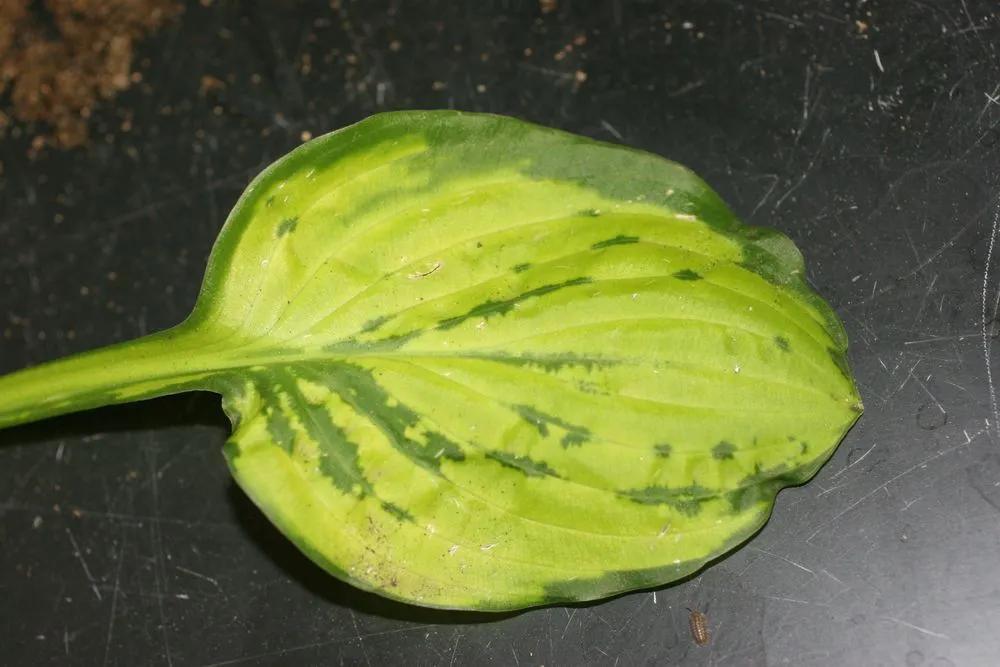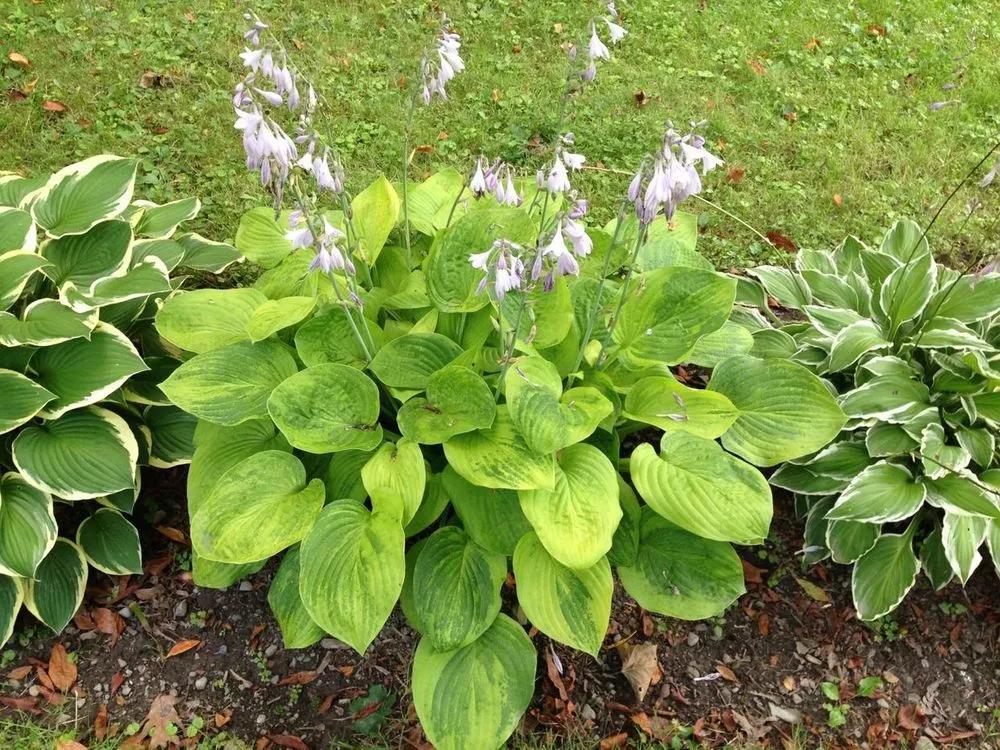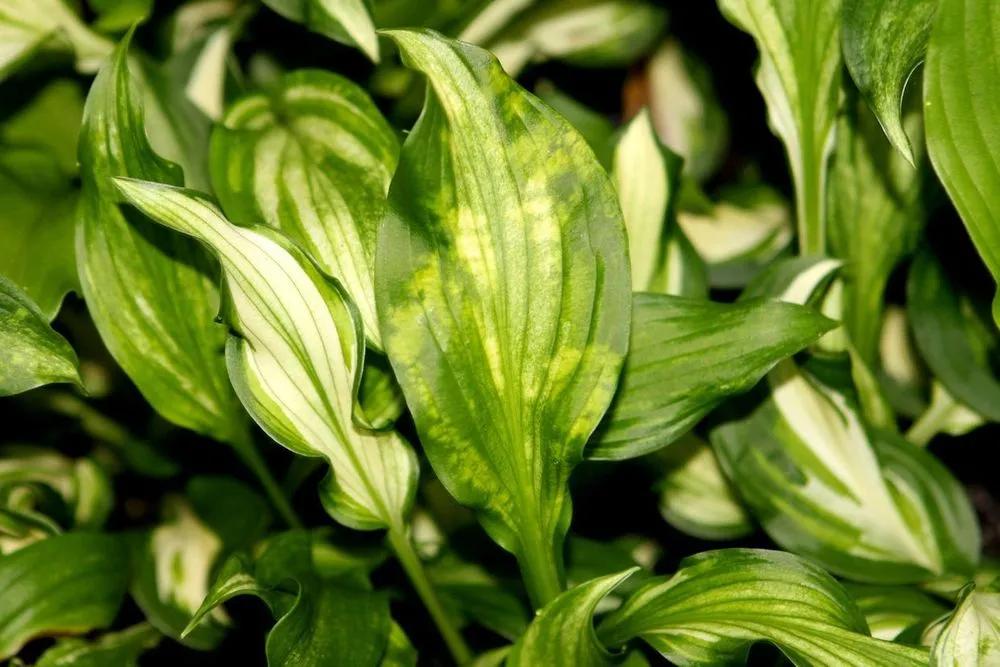Also known as HVX, this virus infects plants in the Hosta genus. Plants in this genus are native to Northeast Asia and are considered shade tolerant. Hosta virus x can now be found worldwide and has become an epidemic. When it first emerged, it wasn’t immediately recognized as a virus and a plant pathogen but as a range of new Hosta cultivars. This was due to the mutations it caused in Hostas, giving them interesting new features that made them highly sought after, allowing the virus to spread freely. This virus primarily spreads through infected sap, so propagation by cuttings and cross-contamination in nurseries led to it becoming an epidemic.
Hosta virus x



Signs of damage
- Discoloration or darker tints in certain areas due to ink-bleed around the veins.
- Wilting and necrosis of leaves.
- Collapsed tissue. This makes the leaves look empty and flat.
- Blotchiness.
- Ringspot.
- Mottling. Irregular striping and spotting in foliage.
- Asymptomatic. Some plants will lose symptoms from one year to the other, but they should still be considered infected.
How to prevent
When a plant is suspected to be infected, it should be burned to prevent the spread of the virus. This also goes for an entire batch where only one plant shows symptoms. Any new acquisitions should be quarantined for at least a year before joining the rest of your collection.
Avoid propagation and division from suspected plants. Avoid opening wounds and pruning damaged leaves, as this will release infected sap and lead to contamination. To prevent cross-contamination, sanitize tools and hands often, even when handling seemingly healthy plants, especially between cuttings.
Monitor regularly for symptoms and always leave empty the place where infected Hostas have been until all remaining roots have died out and rotten.
Heal
The good news, Hosta virus x doesn’t kill its hosts. Despite this, the infection itself can’t be cured, and the plants will remain infected throughout their lives, although they may show no signs and remain asymptomatic.
Go Premium to continue reading
Also you’ll get unlimited access to disease identification and all the other beneficial features
More problems
